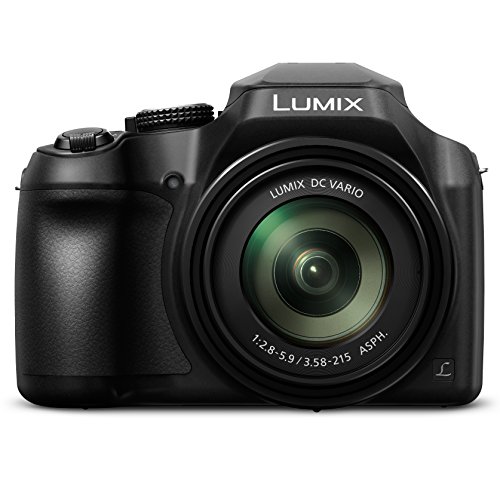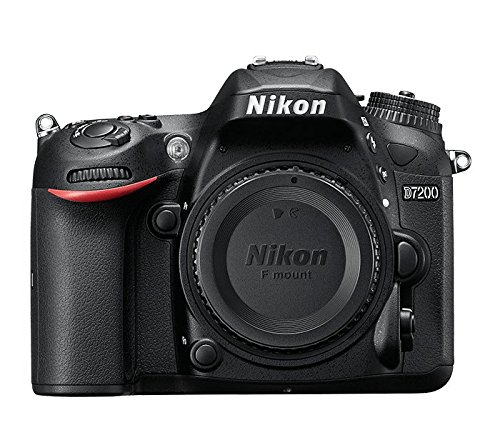As an Amazon Associate we earn from qualifying purchases.
In photography, having a good lens is the top priority. The lens determines everything from the sharpness of the image to its aesthetic beauty. But your lens needs a support system, and the camera is just that. A good camera body adds features like stabilization, which is essential in wildlife photography.
Wildlife photography is all about capturing the fleeting moments of natural life in its rawest form, and for that, you cannot always be near the subject or ask it to hold the pose.
Your camera needs to be capable of getting the picture in time and keeping that in mind, we have made a list of the best wildlife cameras.
Contents
- Review of the Best Wildlife Cameras
- Best Overall: Nikon D500
- Runner-up: Canon 90D
- Best Affordable Camera for Wildlife Photography: Panasonic Lumix FZ80
- Best Camera for Wildlife Photography Beginner: Nikon D7200
- Best Canon Camera for Wildlife Photography: Canon EOS 7D Mark II
- Best Bridge Camera for Wildlife: Canon PowerShot SX420
- Best Wildlife Video Camera: Panasonic Lumix FZ300
- Comparison Chart of the Best Wildlife Cameras
- Can Any Camera Be Used for Wildlife Photography?
- What Makes These Cameras Great for Capturing Wildlife?
- Wildlife Photography Tips, Tricks, and Hacks for Success
- People Also Ask
- Conclusion
Review of the Best Wildlife Cameras
Now that we have some idea of what kind of things your camera should have, let’s review the best wildlife cameras you can buy.
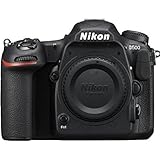
![Canon DSLR Camera [EOS 90D] with Built-in Wi-Fi,...](https://m.media-amazon.com/images/I/41LPfS9ugNL._SL160_.jpg)


![Canon DSLR Camera [EOS 90D] with Built-in Wi-Fi,...](https://m.media-amazon.com/images/I/41LPfS9ugNL._SL160_.jpg)

Best Overall: Nikon D500

PROS
- Has a 4K UHD video quality
- A light and compact design
- Built-in Wi-Fi and Bluetooth
- 20.9 megapixel CMOS sensor
- 153 auto-focus points with 99 cross-type points
CONS
- Settings do not have touchscreen enabled
What Recent Buyers Report
Nikon D500 camera has a small design and therefore feels good in your hand and has better handling than many camera bodies. It seems to be very popular among sports photographers and wildlife photographers because of its ability to capture motion. It also performs very well in low-light conditions. The option for two cards is something that is becoming increasingly popular among users.
Why it Stands Out to Us
The features that make this camera body standout among the rest are the 4K ultra HD video, small and compact, 10 frames per second speed, 153 auto-focus points, dual XQD memory card slots, 51,200 native ISO, and 180k RGB sensor. A 4k UHD resolution is the best you can possibly get from a DSLR, so that is definitely something that you will benefit from.
Because you are looking for a wildlife photography camera, you will be looking for fast speed, and 10 fps speed is among the fastest ones.A normal DSLR will have as little as 6 to 9 AF points, but this camera has 153 AF points for more coverage and clearer images. XQD is the newest and fastest version of memory cards made for camcorders and cameras.
This model is compatible with this technology, and there are slots for two cards. When capturing such high-quality images, you will need an extra pace.The native ISO can be extended to 1640000, and it can go down to -4EV, which produces great contrast and highlights shadows more.
Who Will Use This Most
This camera has a DX-format crop sensor lens, so it will be compatible with any DX-format lens. You can use a full-frame lens on this as well. The manufacturer suggests to use it with the NIKKOR 16 – 80mm f/2.8 – 4E ED VR or NIKKOR 55 – 200mm f/4 – 5.6G ED VR II. Of course, there are several other options available as well.The high speed and amazing low-light performance make it suitable for capturing moving objects and night scenes.
Bottom Line
Nikon is one of the most well known brands of photography products. Both their lens and cameras are of a high-quality design and for professional use. This camera uses the latest technologies and features that result in the best quality and stable images.
- 20.9MP DX format CMOS sensor. Viewfinder: Eye level pentaprism single lens reflex viewfinder
- Expeed 5 image processor; Monitor size: 3.2 inches diagonal
- 3.2 inches 2,539k dot tilting touchscreen LCD
Runner-up: Canon 90D
![Canon DSLR Camera [EOS 90D] with Built-in Wi-Fi,...](data:image/svg+xml,%3Csvg%20xmlns=%22http://www.w3.org/2000/svg%22%20viewBox=%220%200%20210%20140%22%3E%3C/svg%3E)
PROS
- 4K 30p video capability
- 5,482 manual auto-focus points
- Capable of 1/8000 shutter speed
- Has a 32.5 megapixel CMOS sensor
- Intelligent tracking and face recognition system
CONS
- Does not have very many good lens options
What Recent Buyers Report
It is dubbed as one of the best APCS Canon DSLR Camera cameras from Canon. Everything seems to be upgraded and better. It is great at capturing birds, but the buffer might take some time. The high price definitely seems worth it to the users. The image and video quality are very crisp, and you get a lot of details.
Why it Stands Out to Us
The things that we love about this camera are the 32.5-megapixel sensor, 8 image processor, 4K UHD video, 1/8000 shutter speed, dual pixel eye detection, auto-focus modes, and face detection.As we discussed above, shutter speed is very important in wildlife photography, and 1/8000 is the best you can get from a DSLR.
Its other features are similar to what you will expect from any professional camera.One thing it does have is the EOS intelligent racking that detects faces and automatically focuses on them rather than the background, creating beautiful portraits. For portraits, it has the eye detection feature that is supposed to capture more expressive images.
Of the total sensor area, the auto-focus covers 88% both vertically and horizontally, which gives you the ability to focus on corner objects as well. Other than the auto-focus points, there are 5,481 manually selected focus points throughout the frame. These are selected depending on the type of auto-focus you have selected. You can use it to capture different kinds of scenes and focus on different areas.
Who Will Use This Most
The sensor on this camera is CMOS APS-C, so any Canon crop sensor lens will work with it. You can also use third party lenses like Sigma crop sensor lenses. Like other cameras on this list, it is suitable for wildlife and sports photography. Because it has a 4K resolution and 120 fps video speed, it can also be used for sharp and smooth videos.
Bottom Line
If you are a photographer or even just a hobbyist, Canon is a name that you might have come across. Canon has a vast range of camera bodies and accompanying lenses to choose from. This one is a little big but of professional quality. It has everything you will need to form a wildlife camera and more.
- High image quality with 32.5 Megapixel CMOS (APS-C) sensor
- High-speed continuous shooting of up to 10 fps with no time Lag during ovf shooting
- 4K UHD 30P/ Full HD 120P video
Best Affordable Camera for Wildlife Photography: Panasonic Lumix FZ80

PROS
- Capable of 30 fps burst
- Smaller size for traveling
- Has perfect 4K resolution
- 4K video and image quality
- Comes with a 20-1200mm zoom lens
CONS
- Does not work well in low light
What Recent Buyers Report
For a low-priced point and shoot camera, Panasonic LUMIX FZ80 model exceeds expectations. The ultra-wide zoom on the lens takes high-quality images. It has some problems with moving subjects in low light, but they are mostly overlooked, given its performance in other aspects and price. This is mostly used by those that don’t want to overspend and know what to expect from a point and shoot type camera.
Why it Stands Out to Us
Whatever you are buying, the budget is something you have to think about. Therefore, we have added some low-priced alternatives on our list, but this one stands out because it includes a great lens with the camera.The lens has a large zoom up to 1200mm and starts at 20mm. With good lighting and some user experience, you can capture good photographs.
The image resolution is 4K, and it has an 18.1-megapixel sensor, which, given the size of the camera body, is not bad. The lens has an inbuilt image stabilization feature that lets you capture high-resolution videos.
Combined with a high 30 fps shutter speed, the resulting images are sharp and clear.It also lets you change the depth of field of an image if you want a more blurry background. You can also change the focus points after shooting so you have complete control over the final result.
Who Will Use This Most
The FZ80 is considered more of a travel camera because of its small size and light weight. Given the wide zoom range of the lens, you can do just about anything with it. Starting at 20mm, you can take landscape images and going up to 1200mm, you can capture faraway birds and animals easily.
Bottom Line
When buying anything on a budget, you have to compromise on certain things. You just need to know which features are important and which are not. A point and shoot camera will probably not have the same quality as a DSLR, but if you know how to use it, the results are more than what you would expect. This camera with the zoom lens gives you just that.
- Point and Shoot Long Zoom Camera: 18.1 megapixel MOS sensor plus 60X zooms DC Vario lens (20 1220...
- High Resolution View Finder and LCD Display: High resolution 1,170K dot view finder and rear touch...
- 4K video Capture: 4K QFHD video recording (3840 x 2160) with three unique 4K ultra HD video...
Best Camera for Wildlife Photography Beginner: Nikon D7200

PROS
- High maximum ISO of 25600
- Good 51 point auto-focus system
- Built-in Wi-Fi and NFC for Android
- Takes monochromatic images with BW ISO up to 102,400
- 1.3x crop mode on a DX-format CMOS sensor for far objects
CONS
- Does not have 4k video ability
What Recent Buyers Report
One of the things about Nikon D7200 camera is the ability to keep noise level low even at high ISO values. The other thing that users prefer in this is the dual card option. It has a good rigid body that is easy to handle. It is also very easy to use and comes within budget.
Why it Stands Out to Us
This Nikon D7200 passes the mark on what you need from wildlife photography cameras. It might not exceed like our first picks, but it certainly tops many others. The 51 point auto-focus covers a good area of the frame, and you get very sharp images.The sensor does not include a low pass filter, so more light is captured, and the images don’t have distortions.
It also has a native ISO of 25600 and a BW ISO of 102400. BW ISOs are more of a creative choice.It has a built-in Wi-Fi and near field communication system that lets you transfer photos and connect to your smart devices.
This also enables you to operate your camera from a distance.Its speed is around 6 fps, but when using with a 1.3x crop mode, the speed becomes 7 fps. Some extra features include a built-in time-lapse and microphone slot. For auto-focus, it has 51 points on the frame.
Who Will Use This Most
You can use any crop sensor compatible lens with this camera body. Depending on what lens you choose, you can capture any kind of images. The overall performance and features suggest it to be better for wildlife and sports photography. Given the low noise and high ISO performance, it will work in difficult lighting conditions as well.
Bottom Line
We have dubbed it a beginner camera because it does not overwhelm with extra features, and in doing so, it keeps the price low as well. For anyone starting out in photography or maybe a hobbyist who wants to learn the basics, this is a good option.
- 24.2 MP DX-format CMOS image sensor
- No Optical Low-Pass Filter (OLPF)
- 51 point autofocus system
Best Canon Camera for Wildlife Photography: Canon EOS 7D Mark II

PROS
- Full HD 60p resolution
- 65 points all cross-type auto-focus
- Has 10 frames per second shooting speed
- External microphone connection for videos
- Viewfinder has all image settings that can be changed while shooting
CONS
- LCD is not of the best quality
What Recent Buyers Report
Canon EOS 7D is a very sharp camera with crisp image results. The dual-processor is a great addition to performance improvement. Its battery lasts for a long time, so many people take it on trips and for using all day. It’s not too big that it becomes difficult to handle and has a durable body.
Why it Stands Out to Us
One of the top features of this camera is the dual 6 Image processor. Just like your laptops and computers, the camera needs processing power, and the more it has, the better it will perform.Its speed is as high as you will get from most cameras at 10 frames per second, and it has 200,000 cycles in it. This means you can definitely capture moving objects.
For auto-focus, it has 65 points across the frame, which are all cross-type. The center auto-focus point has EV -3 sensitivity. These things make the focusing system more stable and precise, even in low lighting.
Instead of looking at the LCD screen to keep changing the settings, this camera has a viewfinder with all the menu options available so you can save time and energy. It also has a USB 3.0 slot, among other common connectivity options.
Who Will Use This Most
This camera has a movie servo auto-focus that you can use when shooting a video. It tracks the movement of objects and their speed to give better quality videos. The auto-focus expansion lets you increase the focus area, which comes in handy for fast-moving subjects and maybe sports. Another feature that will help with sports, as well as wildlife, is large AF zones. This lets you focus on multiple objects.
Bottom Line
There is no doubt that Canon is one of the best in this industry. This 7D Mark II camera provides not just fast shutter speed but fast overall performance with the dual processor.
It has everything you will need for a good wildlife image, but other than that, it also includes things like HDMI terminal, PC terminal, microphone and headphone terminal, and a remote control terminal. These are all features that every new DSLR should have.
- 20.2 MP CMOS sensor and ISO 100-16000
- High spped continuous shooting up to 10.0 fps
- 65-point all cross-type AF system
Best Bridge Camera for Wildlife: Canon PowerShot SX420

PROS
- Comes with a 24-1008mm lens
- Built-in Wi-Fi and NFC for sharing and uploading images
- Different image stabilization options for videos and images
- Some built-in image settings like fisheye, monochrome, and toy camera
- Can be connected to a smartphone or tablet for remotely controlling the camera
CONS
- Only 720p video quality
What Recent Buyers Report
Canon PowerShot SX420 is a very small and cheap camera that you can take with you anywhere. It is a beginner level model, so there are reductions in quality that come with that, but overall, it is not bad. For a starter, it works fine, and the images are clear, which is what most average users require.
Why it Stands Out to Us
This is another point and shoot camera with a small size. The lens it comes with has a good range of focal lengths from 24 to 1008mm, so you can capture a wide variety of images.
It has a 20-megapixel sensor and a 4+ image processor that creates sharp images.It has Wi-Fi and NFC compatibility, which you can use to connect to either your iPhone or Android device and transfer photos.One of the top features of this camera is the various internal stabilization or IS modes. There is normal, panning, hybrid, tripod, dynamic, powered, and active.
Each work in different situations. Some are for videos and some for images.There is a smart auto feature that selects the right settings for a given scene automatically. It might not be for everyone, but considering it is a beginner camera, this can make things easier for the user.
Who Will Use This Most
As mentioned above, this is a beginner camera. Many of the settings are automatically done by the unit. So, if you are not well experienced, then this will be very useful. The wide zoom lens gives you the freedom to experiment with different styles of photography, from ultra-wide to ultra-long, there is no resection.
Bottom Line
Bridge cameras are midway between point and shoot and single-lens reflex cameras. They are very small, but they don’t have a viewfinder or the ability to change lenses. This is why the very versatile lens of this camera comes out on top.
- Powerful 42x Optical Zoom with Optical Image Stabilizer for outstanding optical performance
- Aspect Ratio: 16:9/3:2/4:3/1:1. Built-in Wi-Fi and NFC allows for easy sharing and transferring of...
- 20.0 Megapixel sensor with DIGIC 4 plus Image Processor helps deliver stunning image quality and...
Best Wildlife Video Camera: Panasonic Lumix FZ300

PROS
- 4K ultra HD video resolution
- 12 frames per second burst speed
- Comes with a 25-600mm zoom lens
- 5-axis correction feature for sharper images
- Can extract 8-megapixel images from 4K video
CONS
- Thumbwheel manual focus is difficult to use
What Recent Buyers Report
Despite Panasonic LUMIX FZ300 not being a DSLR camera, it has many features that you might find in a DSLR. That is what attracts many people to it because you get a good camera at a low price. It is very fast and has a good zoom. The image quality, despite it not being a DSLR, is 4K.
Why it Stands Out to Us
This camera lets you extract images from 4K videos. This way, you get very sharp stills of moving objects. For image stability, it has a 5-axis correction system meaning it corrects movements and blur from five directions.Its zoom lens ranges from 25 to 600mm with an F2.8 aperture.
This means you can get great stills of birds and other wild animals, including good low light performance. For use in outdoor conditions, it has complete dust and waterproof design by sealing everything tightly.It uses a Depth-from-focus feature to keep the subject in focus and the background blur. Other than that, it has Wi-Fi connectivity, RAW image developing feature, and a good 12 frame per second burst speed.
Who Will Use This Most
Many people consider bulky DSLRs to be becoming the thing of the past with your iPhone taking great pictures. This is why people who are not professional users opt for these smaller and cheaper cameras.This camera lets you shoot all kinds of images because it has a good range of focal lengths. This is something that is necessary for these cameras as you cannot interchange the lens.
Bottom Line
This is our last pick for wildlife photography. It has great shutter speed that you require in this type of photography and a good stabilization system that works best in videos. It produces sharp images and has a great blurred background effect as well.
- 4K video and 4K photo: Panasonic’s exclusive 4K photo technology uses 30 frames per second in high...
- Leica DC Vario Elmarit lens: 24x zoom (25 600 millimeter with Full zoom range F2; 8 aperture for...
- High image Quality: The 12.1 Megapixel high sensitivity MOS sensor with the venus engine excels in...
Comparison Chart of the Best Wildlife Cameras
Can Any Camera Be Used for Wildlife Photography?
Essentially, you can use any camera for wildlife photography, just like you can use any model for portraits and landscapes. But if you want the best quality and experience, you need a camera with certain characteristics like good zooming ability, motion capturing ability, etc.
When you are trying to take a picture of a flying bird, you will always need image stabilization. Some lenses have inbuilt stabilization mechanisms, while others don’t. With those lenses, a camera with this feature can help.
A DSLR is the best option for such a task. You can see the image clearly in the viewfinder, and they are, overall, the first choice for most professional photographers. Mirrorless cameras offer similar features at a lighter scale. They are often preferred by travelers because of this.
What Makes These Cameras Great for Capturing Wildlife?
Some of the features that you need in a wildlife camera are similar to those you will need in any situation, but the numbers are higher, and the quality is better. We have explained the most important of these below.
Good Auto-focus
Focusing on cameras can be done one of two ways, i.e., manually or automatically. Lenses have a manual focus ring on them, which you use much like an aperture ring to set the right focus. This technique is preferred in scenery images or where the subject will not move much.
When we talk about wildlife photography, you cannot expect an animal or a bird to remain still. This results in you having no time to set the focus, and that is where auto-focus is required.
When you look through the viewfinder in your DSLR, you will see some auto-focus points. The camera uses these points to determine which areas to focus on. The more points it will have, the better the focus will be. There are somewhere between 5 to fifty-five points generally. But more points also mean more price, so you need to find a balance between them.
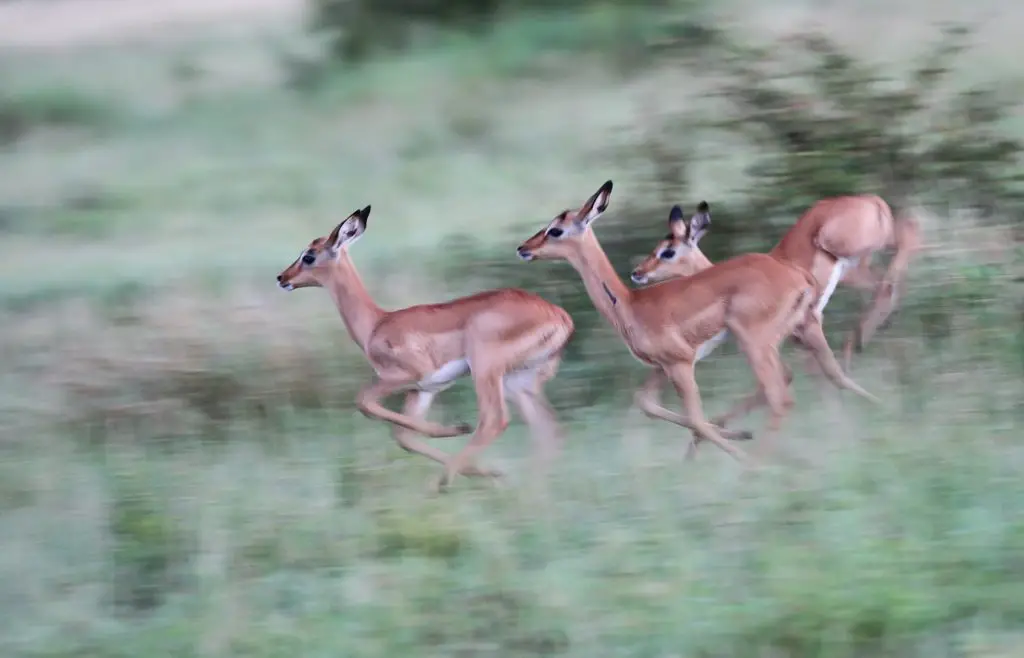
Fast Shutter Speed
Shutter speed compliments the lens feature of aperture. The aperture is the opening in the lens. The wider the opening, the more light it can capture and vice versa. Shutter speed, on the other hand, is how long the lens will remain open.
If you want bright pictures or are shooting at night time, then you will need to set the speed at lower numbers. In most DSLR cameras, the slow shutter speed is somewhere in the 1/100th of a second. It can go as high as 30 seconds too. Thus, if you want to create a blur effect in your images, like maybe capturing a waterfall, cheetah’s motion, etc., then it will be a great pick.
Mostly, however, in wildlife, you need fast shutter speed. Fast speed means you can capture the minutest of motions. The flapping wings of a bird, the dolphin jumping out of the water, the loin attacking its prey can all be captured with fast speed cameras.
Professional cameras will typically have a speed of 1/8000. Meanwhile, the more common cameras will have 1/4000, which works in most conditions.
Sensor Size
Light, as you might have guessed, is the most important ingredient in taking a good picture. Everything from the lens quality to the shutter, focuses on capturing as much light as possible. The sensor, in a way, does the same thing. Their function is similar to the function of a film used in older cameras.
The sensor is composed of millions of photo-sites that capture light and record the information that comes with it. More photo-sites and bigger sensors mean more information and better image quality. This also reduces noise and other disparities in the images.
DSLRs have two types of sensors, i.e., full-frame and APSC sensors. The full-frame sensor is equal in size to the standard 35mm film while the APSC sensor has a size of 22x15mm. Bigger sensors are not always accepted as they need space and end up making the camera big and bulky. They are also better at capturing far off objects. APSC sensors are, therefore, more popular.
But if the size is not an issue and you need to capture the most in the scene, then a full-frame camera is a better option.
Wildlife Photography Tips, Tricks, and Hacks for Success
Every type of photography has its tips and tricks, and so does wildlife photography. This is probably one of the most difficult ones as you have to adjust to the animals and their unpredictable movements. The outdoor element of this photography also poses a dilemma. So here are some things you can do to make the process easier for you.
Lighting
Lighting is very important, this cannot be stressed enough. You might have seen many nature images with birds flying over water or other animals running over shallow water. There are also mountains and trees and a lot of elements that you have to work with.
To get the best out of them, there needs to be contrast and depth in the image. It is generally advised to shoot with the sun behind you, so the focus is more on the subject. On the other hand, back-lighting is also a very useful technique. In this, the sun is behind the subject. This creates more artistic images with glowing subjects. It is often used on water.
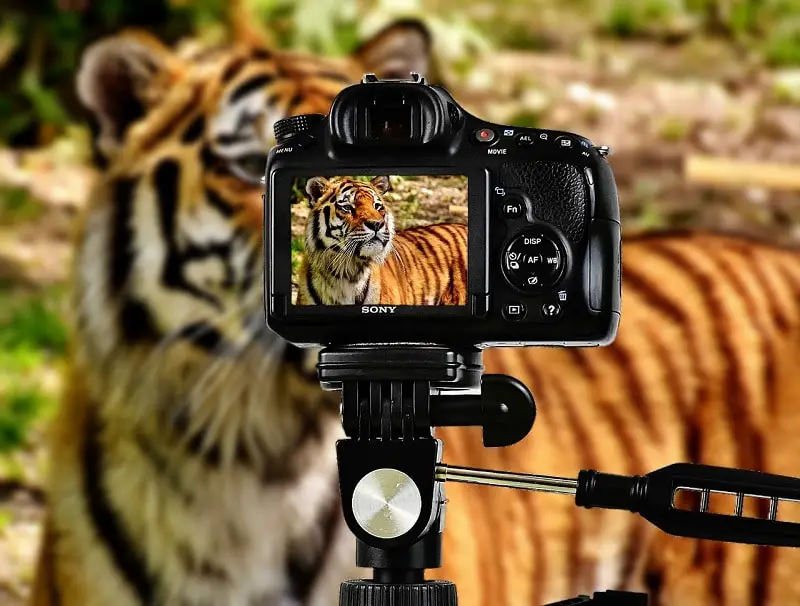
Stability
As mentioned several times before, stability is very important for moving objects. You don’t need a blurry image of a bird with its wings all over the place. Stability can come through high shutter speeds because you don’t have to keep the camera steady in your hand for long, and the lens captures the moment.
If you are working in low light and need to keep the shutter on for long or you need to shoot a video, a tripod is the best way to go.
Weather Protection
Because of the nature of this photography, you will find yourself and your camera equipment in places with mud, dust, sun exposure, water, and more. Therefore, you need a camera that has a sturdy design to handle different conditions and features for weather protection like a lens cap, sealed joints, and water, and shockproof outer body.
People Also Ask
In case the above article did not fully answer your questions regarding wildlife photography and cameras, you can read the following frequently asked questions.
What is Wildlife Photography
Wildlife photography includes capturing animals in their natural habitats and getting the rawest and real results of their life.
What Size Lens Do I Need For Wildlife Photography
For wildlife photography, mostly zoom lenses with long focal lengths are used. They mostly go as high as 400mm or more.
Do Wildlife Cameras Flash?
Wildlife cameras can have flash. Some cameras called trail cameras that are used to capture images remotely have this feature. Often times, the photographer leaves the camera attached to the place of habitat and the camera records overnight.
How Many Megapixels Do I Need For Wildlife Photography?
20 megapixels is a good place to start for wildlife photography.
Conclusion
In the end, what is important is that you enjoy the process of shooting wildlife. It’s an adventurous undertaking, but you certainly get some breathtaking results. All these cameras will serve some people better than others, but they all have high-quality designs. Choose the one that suits your budgetary as well as artistic needs.


![Canon DSLR Camera [EOS 90D] with Built-in Wi-Fi,...](https://m.media-amazon.com/images/I/41LPfS9ugNL.jpg)
